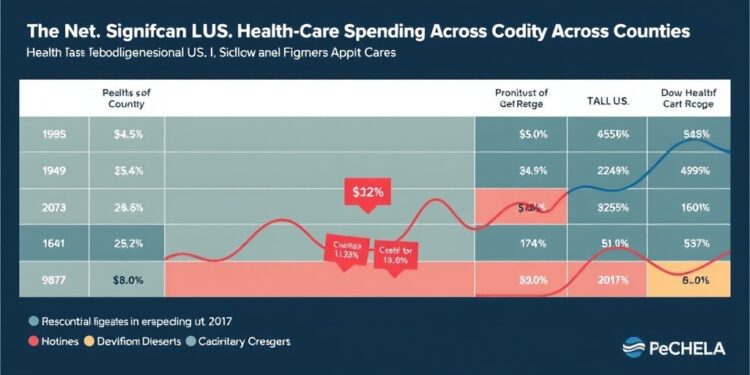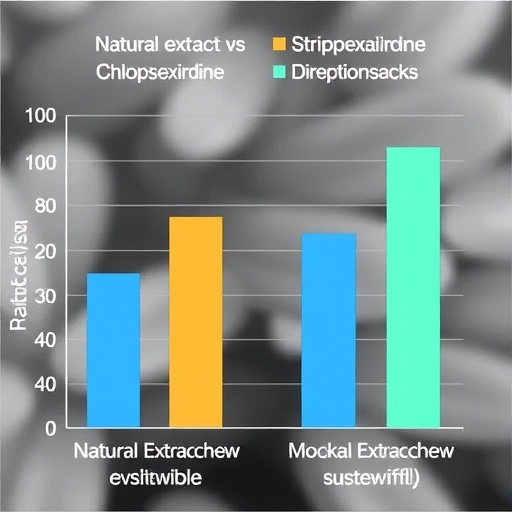
In a groundbreaking study released in February 2025, researchers at the Institute for Health Metrics and Evaluation (IHME) at the University of Washington have unraveled the intricate patterns of health care spending across the United States. This comprehensive analysis spans over 3,110 counties and investigates expenditures across multiple categories, including 148 health conditions, different age and sex groups, and various types of care. The study was published in prominent journals, the Journal of the American Medical Association (JAMA) and JAMA Health Forum, making significant contributions to the field of health economics and policymaking.
The scale of this research is awe-inspiring, leveraging data from over 40 billion insurance claims and nearly a billion facility records, supported by numerous survey datasets. Such extensive data collection allows the researchers to present an in-depth understanding of health care costs and their fluctuations from one region to another. This study opens a window into the vast disparities that exist within the U.S. health care system, illuminating the stark contrasts that characterize health expenditure across the nation.
The findings reveal that type 2 diabetes stands out as the most financially burdensome health condition, costing a staggering $144 billion annually across the United States. This figure is indicative of the pressing need for more effective prevention and treatment strategies, as diabetes remains a significant contributor to overall health care costs. The insights also extend beyond diabetes, shedding light on other costly health conditions such as musculoskeletal disorders, oral disorders, ischemic heart disease, and urinary diseases, all of which represent significant financial strains on health systems and have profound implications for patient care and health planning.
Geographically, the study underlines extreme variability in health care spending. For example, Nassau County in the New York metropolitan area reports the highest per capita health care expenditure at $13,332, contrasting sharply with Clark County in Idaho, where spending is only $3,410 per capita. Such disparities call for targeted policy initiatives that address these regional imbalances and seek to improve access to care in underfunded areas.
The examination of health care costs through the lens of age reveals that more than 40% of health care expenses are attributed to individuals over the age of 65. This statistic reflects the increasing demands on health care systems as the population ages, highlighting the need for systems that can cater effectively to older patients. Conversely, those under 20 years of age account for less than 12% of expenditures, suggesting that preventive health measures for younger populations may warrant further attention to reduce future health care burdens.
Delving deeper into the costs associated with different types of care, the study categorizes expenditures into ambulatory, inpatient, pharmaceutical, nursing facility, dental, home health, and emergency department care. Ambulatory care, which encompasses all primary and outpatient services, represents a significant portion, accounting for over 42% of total health care spending. Inpatient care follows at 24%, while pharmaceuticals account for 14%. Despite emergency department care being the least costly sector at 2% of total expenditures, it experiences the fastest growth. Such trends emphasize the need to invest in preventive care to potentially reduce emergency care reliance, enhance patient outcomes, and alleviate stress on emergency facilities.
Particularly noteworthy is the finding that health conditions associated with mental health and substance use are experiencing alarming growth rates in spending. Autism spectrum disorders, with a staggering average annual growth rate of 13%, signify a rising public health concern demanding immediate attention. Similarly, opioid use disorders and various substance use disorders are seeing significant increases in expenditure, important indicators of the ongoing public health crises that the U.S. grapples with.
In addition to spending variations among counties, the research outlines considerable differences in health care packaging and how it varies by payers, namely Medicare, Medicaid, and private insurance. The stark contrasts in per capita costs—for example, Medicare expenditures in Florida’s Sumter County reaching $18,284—underscore the influence of local health care markets and policies on financial outcomes, highlighting the need for standardized practices that can facilitate equitable care delivery.
Understanding the drivers behind these stark disparities in spending has also been a crucial focal point for the researchers. They identified that utilization rates are the foremost contributor to variations in health care expenditures, accounting for 65% of differences. Factors such as service prices and the intensity of care services represent 24% of cost disparities, while age and disease prevalence play significantly smaller roles in spending variation. Such insights can be pivotal for policymakers seeking to implement initiatives aimed at optimizing resource allocation and improving health care access across diverse communities.
The collective insights drawn from this study provide a crucial foundation for informing health policy discussions moving forward. The disparities in health care expenditures across counties imply that some regions have developed more effective and efficient frameworks for delivering care. Whether through innovative care models, data-driven technological utilization, or stronger preventive health initiatives, the findings underscore the potential for establishing a nationwide strategy aimed at modernizing health care delivery.
This comprehensive investigation into health care expenditures reveals substantial opportunities for reform and innovation, presenting a call to action for stakeholders at all levels. By fostering informed dialogues regarding spending patterns and operational efficiencies, stakeholders can pursue initiatives that ensure sustainable health care delivery while addressing the needs of diverse populations.
Subject of Research: People
Article Title: Tracking US Health Care Spending by Health Condition and County
News Publication Date: 14-Feb-2025
Web References: Not available
References: Not available
Image Credits: Not available
Keywords: Health care spending, type 2 diabetes, health conditions, health disparities, health policy, emergency care, ambulatory care, Medicare, Medicaid, private insurance, expenditure analysis.
Tags: billion facility records in health studydemographic health care spending trendshealth care costs by countyhealth condition expenditure comparisonhealth economics research 2025Institute for Health Metrics and Evaluation studyinsurance claims data analysisJAMA health research publicationregional health care expenditure differencestype 2 diabetes financial burdenU.S. health care policy implicationsU.S. health care spending disparities





